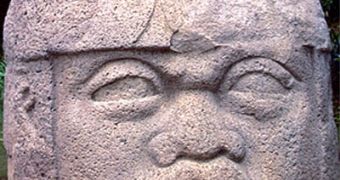The Olmecs preceded the Maya culture by about a millennium and represent the oldest complex civilization in the Americas. They were the first to invent a writing system, as revealed by stone (serpentine) blocks, the so-called Cascajal blocks, found in 2006 in Southern Veracruz, Mexico.
Their civilization is regarded as "mother" culture for the much more famous Maya and Aztec civilizations. Their culture flourished between 1200 - 400 B.C., on the south-eastern coast of Mexico (Veracruz and Tabasco). Olmec-style bas-relief carvings in granodiorite (a rock much harder than limestone), dated 700 B.C., have been found even at Zazacatla in Morelos, 60 miles (97 kilometers) south of Mexico City.
Many of the attributes of later Mesoamerican civilizations, like Maya (1,000 BC-1,500 AD), Zapotecs (500 BC-1,000 AD), Teotihuacan (0-700 AD), Toltecs (900-1,200 AD) and Aztecs (1,200 AD-1,523 AD) are due to the Olmecs, like the calendar and truncated pyramid shaped temples. The tortilla, Mexico's basic aliment, could have started with the Olmecs.
But the most mysterious remains left from the Olmecs are represented by giant human heads, devoid of bodies, 3 m (10 ft) tall and weighing 20 tonnes, dispersed into a small area called La Venta (Tabasco). The heads are carved in basalt, with a great artistic refinement and wear odd rounded and flattened helmets, looking like swimming helmets or ... astronaut helmets. Scientists are puzzled because the basalt is very hard to work on, and the Olmecs did not employ metals. Moreover, the basalt was brought from 100 km (62 mi) away by people that did not know the wheel or transport cradles.
Scientists are even more astonished by the faces of the giants: the eyes resemble those of the White race, the cheekbones are Mongoloid and the thick lips and flattened noses resemble those of the Blacks. Hard to say how they were made and which was their purpose...

 14 DAY TRIAL //
14 DAY TRIAL //